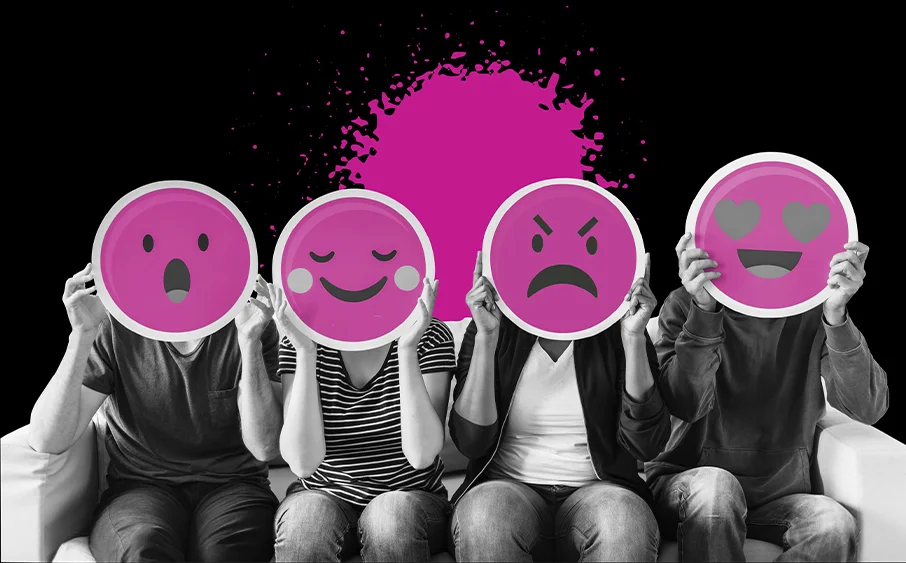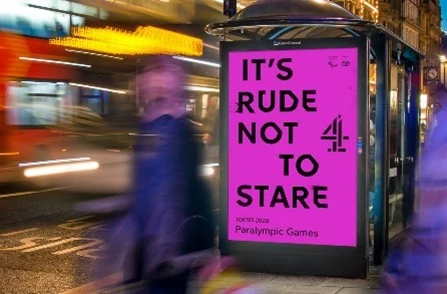
One thing we hate at Mind Field Research is jargon. We’ll often have a game of ‘Bullshit Bingo’ if we’re caught in a meeting with folk using jargon to try to sound clever. It eases the pain.
We’re not into big fancy words or baffling theory. We’re into doing work that deserves to exist. How do we know when it deserves to exist? When people don’t mind, or dare we say it, even like our clients’ ads.
When our client’s sales are up. When consumer engagement is high. When their audience is behaving in the right way.
Aha! There it is: BEHAVING.
You can’t build a successful brand strategy until you know how people behave, not how they say they behave.
Channel 4’s recent 2021 Paralympics ‘It’s rude not to stare’ campaign is a good example. This instructs people to do something that is opposite to the instruction they received as a child. It tunes into people’s behavioural norms. It believes and recognises human internal conflict. As humans we are rarely able to vocalise these things – it’s the job of the Researcher to uncover the truth.

Now, I’m a ‘focus group’ hater – controversial for a qualitative research lifer I know. The thing is, when people come together for a discussion, they will tell a version of the truth; what they believe to be true. The problem is people are poor witnesses of their own behaviour.
Don’t get me wrong. Focus groups have their place in the mix. But we will give our client’s objectives a thorough examination before we decide they are right for the job. And when we do think a simple consumer survey or focus group is the right method, we will use behavioural science to help us move past reported behaviour with a range of techniques that recreate the way people naturally engage with products, brands and ads.
Tell me you’re a ‘show off’ without ‘showing off’.
I could give you big list of behavioural science research methods we use at Mind Field Research. (Only a researcher would consider listing methods as showing off!) However, we’d rather talk to you about our capabilities and how they can help you to build strong marketing and brand strategies, engage your audience and grow your business.
Here comes the theory…
You didn’t think we’d let you read to the end without flexing our BS theory muscles, did you?
Here’s a jargon buster for some of the key behavioural science theory we use when we design research solutions.
Think of it as us taking the BS out of BS if you like:
System 1, 2 and 3 thinking – How consumers make decisions using the different parts of their brain. 1 = autopilot, 2 = rational, 3 = imagined experience
Unconscious bias – The preconceived perceptions that people have. Whether they are true or not
Status quo bias – It’s why people stick with the same bank or energy supplier all their life. If it’s not broken don’t fix it
Heurists – How people use logos, pictures and colours to shortcut their understanding and make a quick decision
Anchoring – People will choose a product/service/brand as a benchmark, and use this to judge competitors
Loss aversion – The Fear Of Missing Out (FOMO for short). Ever phoned up your phone provider to leave and been hit with an offer you can’t refuse?
Scarcity – One restaurant has a massive queue, the one next door is dead, which do you want to go to?
Herd mentality – We’re all sheep. We can’t help it. We naturally want to do what others do. Well, some of us anyway!
Hot state decision making – Get it whilst it’s hot. It’s a now or never offer.
Social incentives – If you use ‘this brand’ or buy ‘this product’ you will receive social recognition and acceptance. It’s why TikTok exists.
Still here?
You must be a fan of BS too!
Let’s talk more about how we can help you with your research needs. Just email us here.